Before we start: Before fixing crashed hard drive, you can use data recovery software - such as Donemax Data Recovery to export all data from the drive to another drive. Donemax Data Recovery also can help you fix crashed drives on Windows or macOS and reformat any drive to fix logical errors.
PAGE CONTENT:
Hard drives play a crucial role in storing digital data, from important work documents to personal memories like photos and videos. When a hard drive crashes, it can result in significant data loss and system failure, causing frustration and potentially serious consequences. Understanding the causes of a hard drive crash, how to diagnose it, and what recovery options exist can help you protect your data and restore functionality.
In this article, we will explore what a hard drive crash is, its common causes, how to diagnose the issue, data recovery methods, and most importantly, how to prevent such incidents in the future.
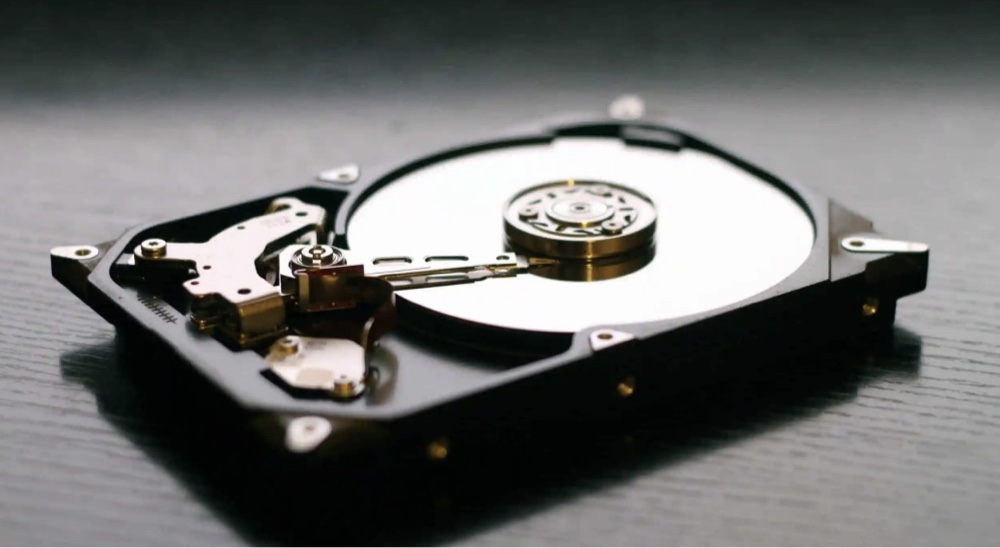
What is a Hard Drive Crash?
A hard drive crash refers to the failure of a storage device that prevents it from functioning properly, often resulting in data inaccessibility or complete loss. Hard drive crashes can be categorized into two main types:
1. Physical Crash
A physical crash occurs when mechanical components inside the hard drive, such as the read/write heads, platters, or motor, malfunction. This often results from physical damage, manufacturing defects, or natural wear and tear over time.
2. Logical Crash
A logical crash involves software-related issues, such as file system corruption, operating system errors, or malware infections, which make the data on the hard drive inaccessible even though the hardware itself remains intact.
Understanding the type of crash is essential for choosing the appropriate recovery method.
Signs and Symptoms of a Hard Drive Crash
Recognizing the early signs of a hard drive crash can help you act quickly and minimize data loss. Common symptoms include:
- Unusual Noises: Clicking, grinding, or beeping sounds from the hard drive often indicate mechanical failure. This is sometimes referred to as the "click of death."
- System Freezes or Crashes: Frequent system hangs, crashes, or blue screen errors can signal drive issues.
- Failure to Boot: The operating system may fail to load, displaying errors such as "No bootable device found."
- Drive Not Detected: The hard drive does not appear in BIOS/UEFI or disk management tools.
- Slow Performance: Noticeable lag during file access, software launches, or system operations.
- Error Messages: Frequent file corruption errors, "Disk not accessible" warnings, or "Drive needs to be formatted" prompts.
If you notice these signs, it's essential to take immediate action to safeguard your data.
Common Causes of Hard Drive Crashes
Understanding the causes of hard drive crashes can help in both recovery and prevention. The main categories include:
1. Physical Causes
- Mechanical Failure: Moving parts within the drive, such as the spindle motor or read/write heads, can wear out over time, especially in traditional hard disk drives (HDDs).
- Power Surges: Sudden voltage spikes can damage the drive's circuits or controller board.
- Physical Impact: Dropping a laptop or external hard drive can lead to platter misalignment or head crashes.
- Manufacturing Defects: While rare, some drives have inherent faults that cause premature failure.
2. Logical/Software Causes
- File System Corruption: Improper shutdowns, interrupted writes, or software bugs can corrupt the file system.
- Virus or Malware Attacks: Malicious software can damage system files or the partition structure.
- Bad Sectors: Over time, portions of the disk can become unreadable, leading to data loss or system instability.
- Operating System Failures: System-level crashes or corrupted boot files can make the drive appear inaccessible.
3. Environmental Causes
- Overheating: Excessive temperatures can warp internal components, especially if ventilation is poor.
- Dust or Water Damage: Exposure to dust, humidity, or liquid spills can compromise the drive's functionality.
Recognizing these causes helps you adopt preventive measures to reduce the risk of a crash.
How to Diagnose a Hard Drive Crash?
Diagnosing whether your hard drive has crashed involves both physical observation and software tools:
1. Listen for Noises
If the drive emits clicking, grinding, or buzzing sounds, it likely indicates mechanical failure. Power down the device immediately to avoid further damage.
2. Check BIOS/UEFI
Enter your system's BIOS or UEFI settings during startup to see if the hard drive is detected. If it's not listed, the drive may have failed physically or lost connection.
3. Use Disk Management Tools
- Windows: Right-click on the Start menu, select Disk Management, and check if the drive appears.
- Mac: Open Disk Utility under Applications > Utilities to view connected drives.
If the drive appears but shows as unallocated or inaccessible, this may suggest logical corruption.
4. Run SMART Diagnostics
Self-Monitoring, Analysis, and Reporting Technology (SMART) tools check the health status of your hard drive. Popular tools include:
- CrystalDiskInfo (Windows)
- DriveDx (Mac)
- GSmartControl (Cross-platform)
Look for indicators like Reallocated Sector Count, Pending Sectors, or Overall Health Status.
5. Use Third-Party Diagnostic Software
Tools like HDDScan, SeaTools (for Seagate drives), or Western Digital Data Lifeguard can provide detailed analysis of drive health and performance.
Immediate Steps After a Hard Drive Crash
If you suspect a hard drive crash, follow these steps to minimize data loss:
- Stop Using the Drive: Continued use can worsen the damage, especially with mechanical failures.
- Power Down the Device: Disconnect the device if you hear unusual noises or suspect physical damage.
- Backup Accessible Data: If the drive is partially accessible, copy critical files to another storage device immediately.
- Avoid DIY Physical Repairs: Opening the drive or attempting mechanical fixes without expertise can permanently destroy data.
Data Recovery Options for Crash Hard Drive
1. DIY Data Recovery Methods
If the crash is due to logical errors and the drive is still recognized:
🔹 Data Recovery Software
Programs like Donemax Data Recovery can recover lost files from logically damaged drives.
Step 1. Download and install Donemax Data Recovery on your computer.
Step 2. Open Donemax Data Recovery, select the crashed hard drive to start data recovery.
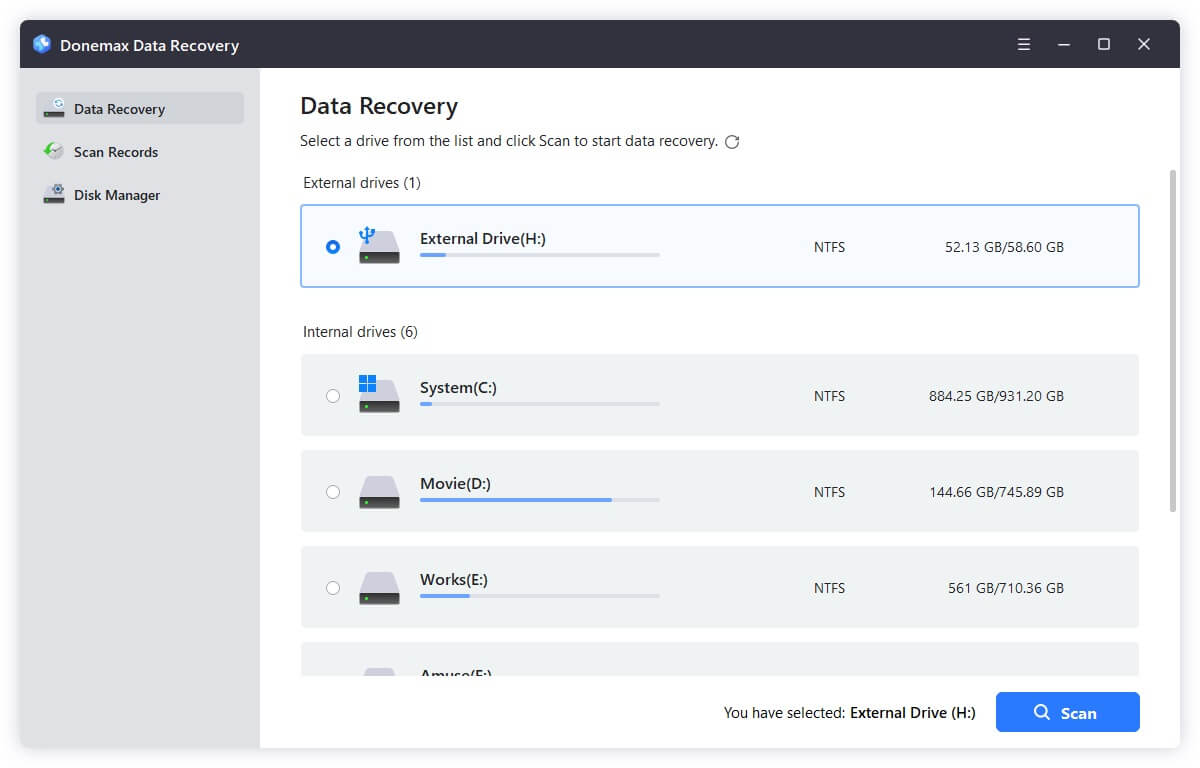
Step 3. Click on Scan button to deeply scan the drive and find all existing files, inaccessible files, deleted/formatted/lost files.
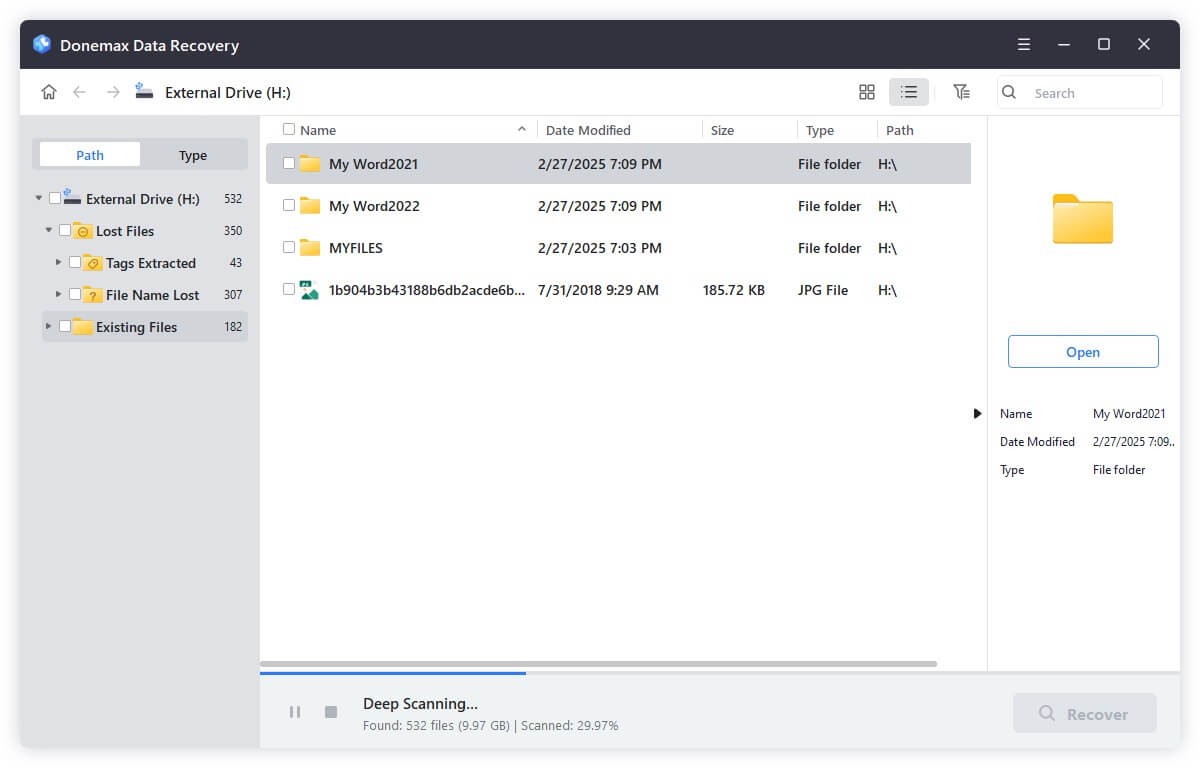
Step 4. After scanning, you can preview all recoverable files. Then select the wanted files, click on Recover button to save them.
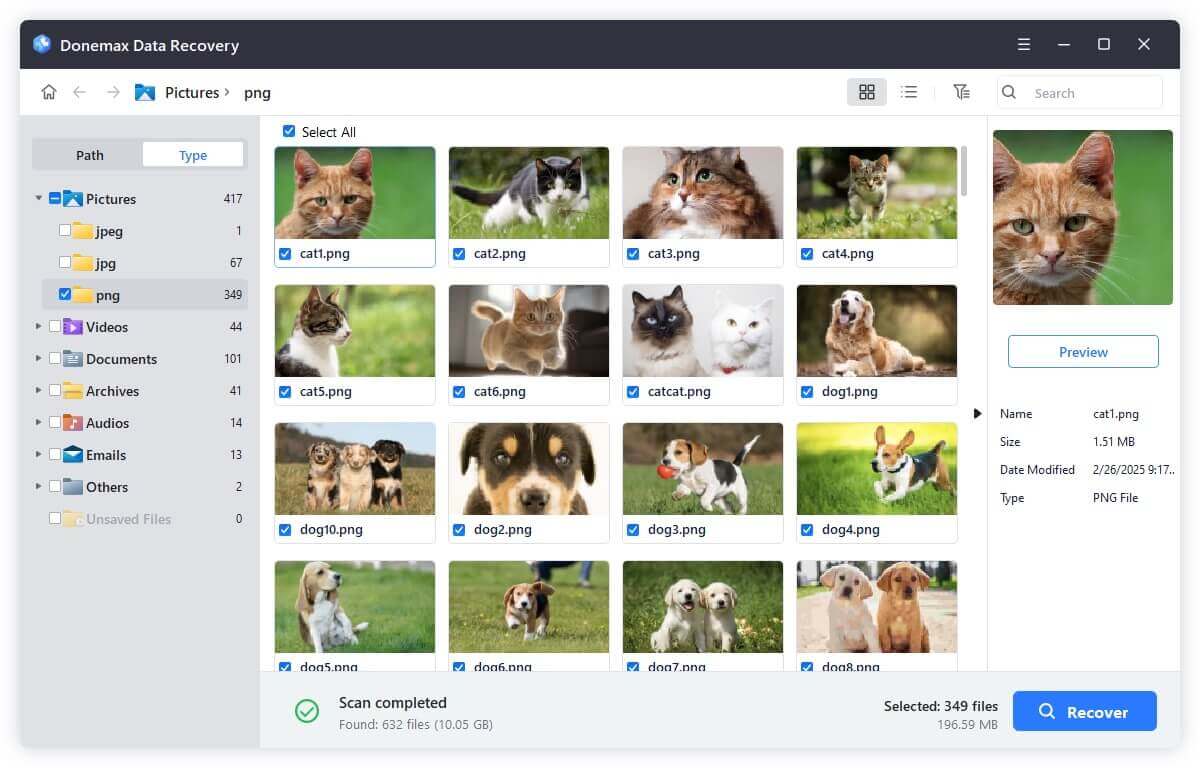
🔹 Drive Cloning
Clone the failing drive sector by sector using tools like Donemax Disk Clone, Clonezilla or Macrium Reflect. This allows you to work on a copy, reducing further risk to original data.
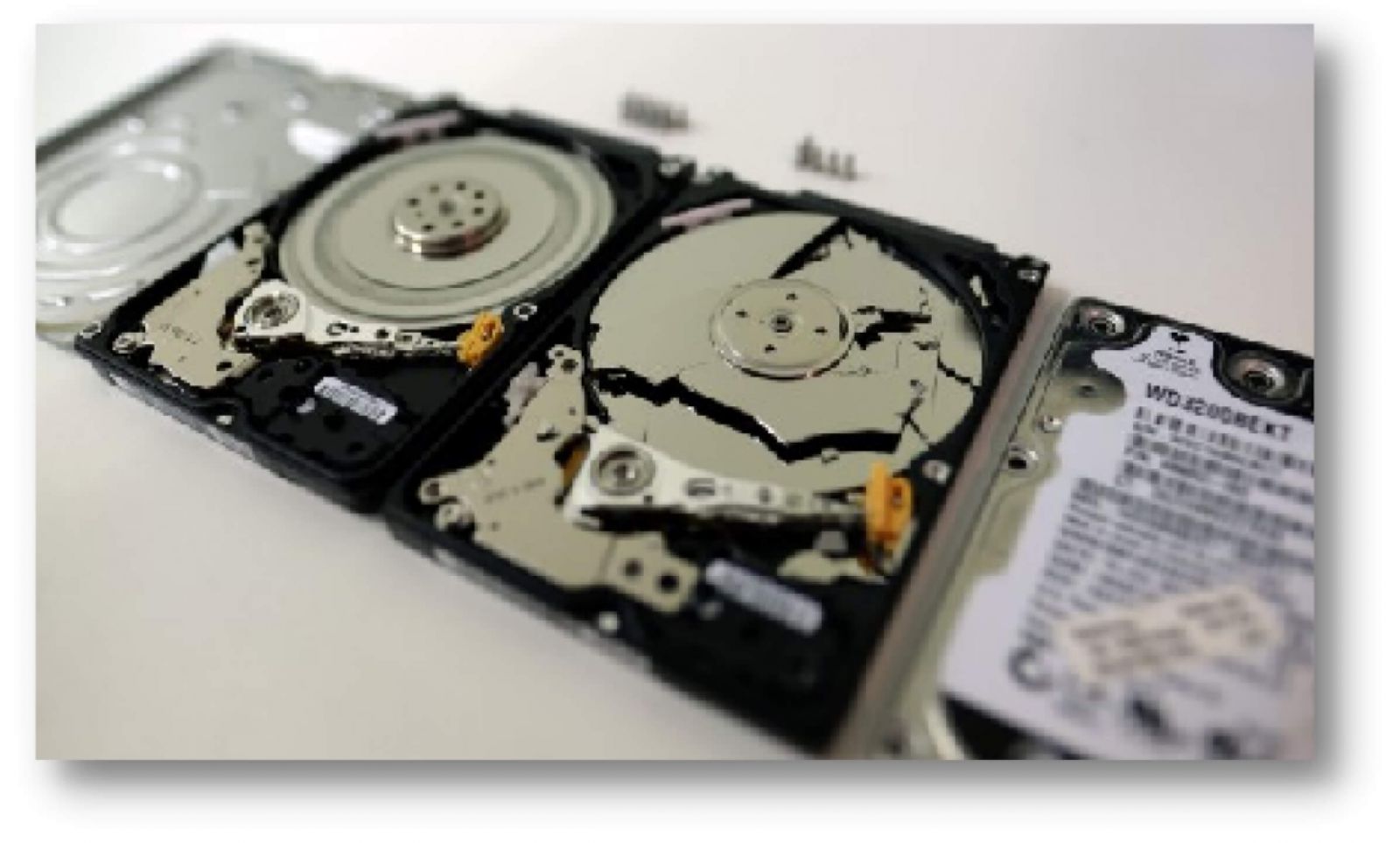
Clone Crashed Hard Drive to a New Drive
Clone a crashed hard drive to a new drive, then replace the crashed drive with another HDD or SSD.
💡 Note: DIY recovery is only recommended if the drive isn't making abnormal noises or physically damaged.
2. Professional Data Recovery Services
For severe mechanical failures or inaccessible drives:
- When to Seek Help: If the drive emits clicking or grinding sounds, is not detected by BIOS, or has suffered physical trauma.
- What to Expect: Data recovery labs use cleanroom environments and specialized equipment to retrieve data.
- Success Rates: Depend on the extent of damage. Recovery is often possible, but not guaranteed.
- Cost Considerations: Prices vary based on drive type, damage severity, and urgency. Recovery can range from $300 to over $2000.
Leading data recovery services include:
- DriveSavers
- Ontrack
- SalvageData
While expensive, professional recovery may be the only option for critical, unrecoverable data.
3. Replace a Crashed Hard Drive
If recovery is unsuccessful or the drive is beyond repair, replacing it becomes necessary:
Choosing a Replacement
- HDD vs SSD: SSDs offer faster performance, greater durability, and lower failure rates, making them ideal for primary storage.
- Capacity Needs: Consider your storage requirements, such as data size, system files, and backups.
Installation Steps
- Power off your computer.
- Remove the old hard drive and connect the new one.
- Install your operating system or restore from a backup.
- Transfer recovered or backup data to the new drive.
If unfamiliar with hardware installation, consult a professional technician.
Prevent Hard Drive Crashes
Prevention is always better than cure. Here are essential tips to avoid hard drive crashes:
- Regular Backups: Use external drives, cloud storage, or network-attached storage (NAS) for consistent backups.
- Power Protection: Utilize surge protectors or uninterruptible power supplies (UPS) to prevent electrical damage.
- Temperature Management: Keep your computer or external drives in a cool, ventilated environment.
- Avoid Physical Impact: Handle laptops, desktops, and external drives with care to prevent drops or knocks.
- Monitor Drive Health: Use SMART tools regularly to check for early signs of failure.
- Defragmentation (For HDDs): Periodically defragment mechanical hard drives to optimize performance (Note: Not applicable to SSDs).
- Use Antivirus Software: Protect against malware and ransomware that can damage or encrypt your data.
These measures significantly reduce the likelihood of data loss and hardware failure.
Conclusion
A hard drive crash can be a stressful experience, but understanding the causes, signs, and recovery options can make a significant difference. Acting quickly, backing up your data, and adopting preventive measures will minimize disruptions and safeguard your valuable information.
While data recovery may be possible in many cases, prevention remains the best strategy. Regular health checks, careful handling, and robust backup routines can extend the lifespan of your hard drive and protect against unexpected failures.
Stay proactive, stay protected, and ensure your digital life remains safe even when hardware fails.
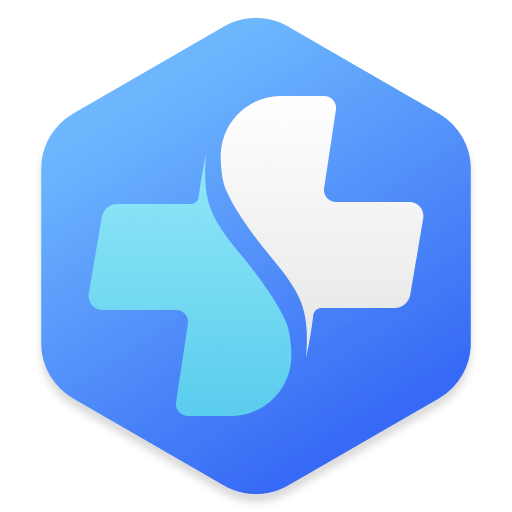

Donemax Data Recovery
One of the best data recovery programs to recover deleted, formatted or lost data from PC, Mac, HDD, SSD, USB drive, SD card, camera, RAID, Sever or other storage devices.
Related Articles
- May 22, 2025What to Do If a Hard Drive Is Unallocated on Windows?
- Feb 19, 2025Fix The Parameter is Incorrect Without Losing Data
- Nov 18, 2024External Hard Drive Not Working on M4 Mac, Fix It Now
- Jun 16, 2025How to Unlock USB Flash Drive?
- Jul 04, 2024Cannot Format Seagate External Hard Drive on Mac? Fix It Now
- Sep 08, 2025iMac's Fusion Drive Not Mounting, How to Fix It?

Christina
Christina is the senior editor of Donemax software who has worked in the company for 4+ years. She mainly writes the guides and solutions about data erasure, data transferring, data recovery and disk cloning to help users get the most out of their Windows and Mac. She likes to travel, enjoy country music and play games in her spare time.

Gerhard Chou
In order to effectively solve the problems for our customers, every article and troubleshooting solution published on our website has been strictly tested and practiced. Our editors love researching and using computers and testing software, and are willing to help computer users with their problems